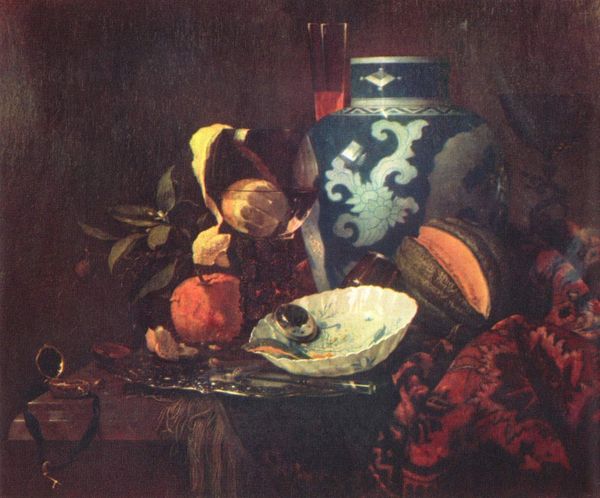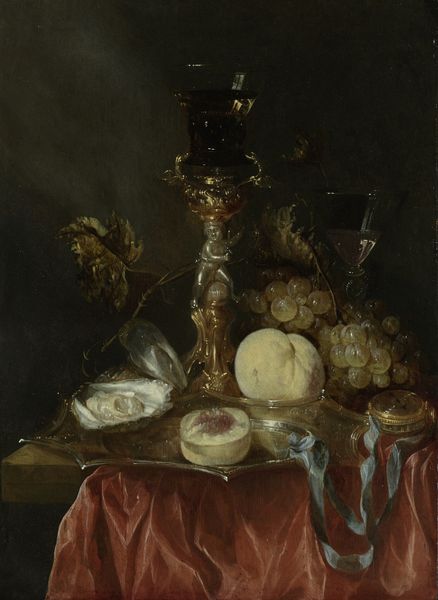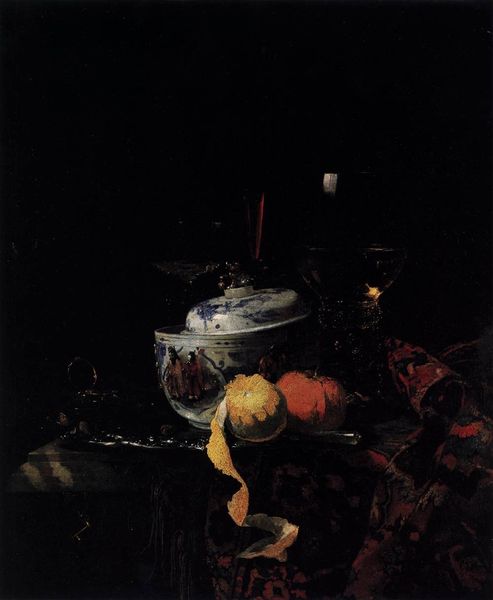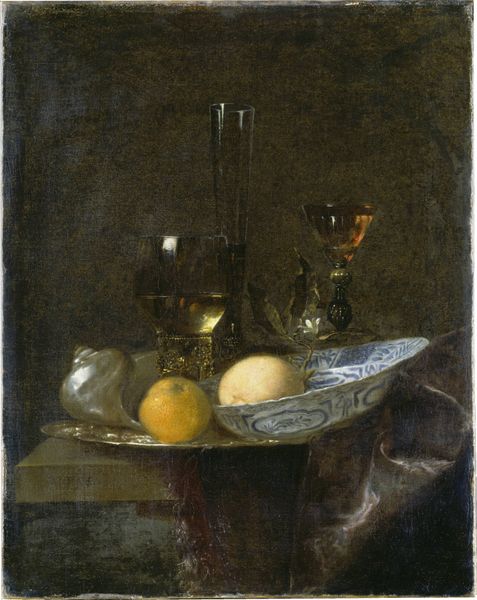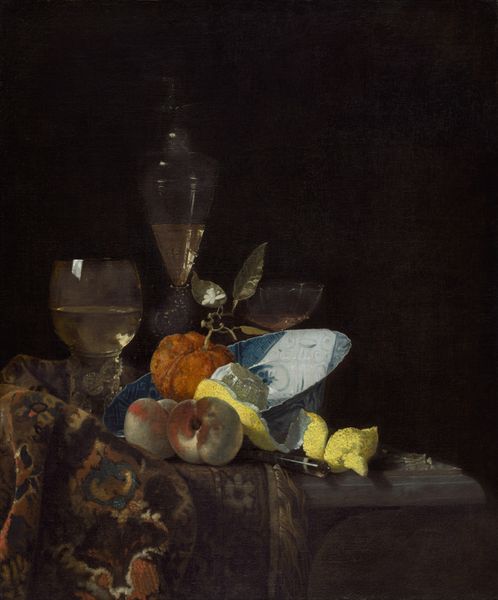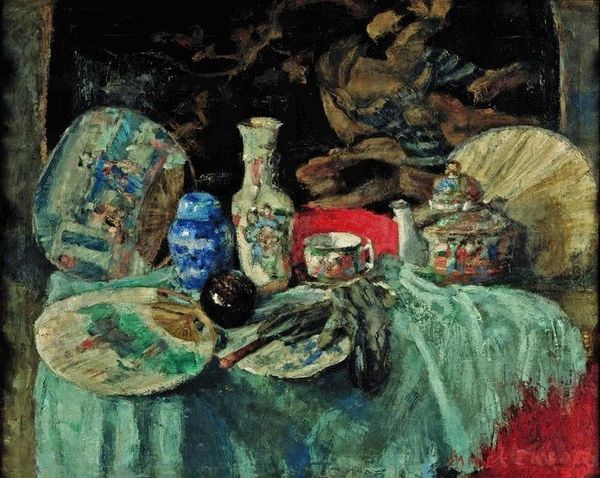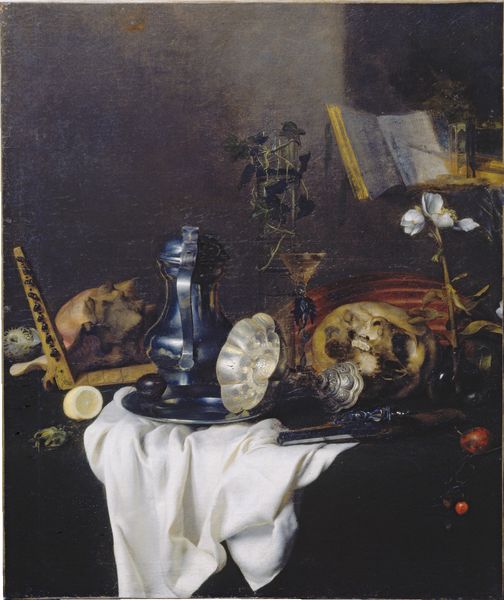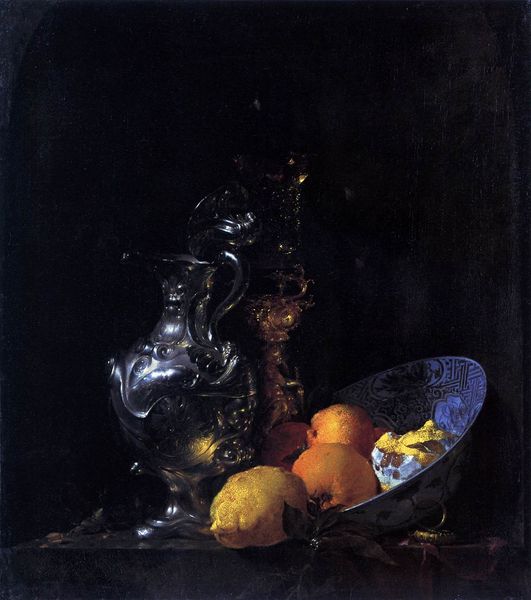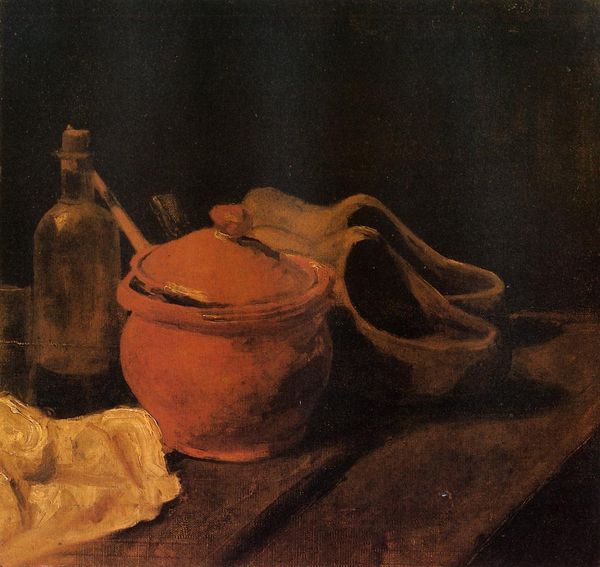
oil-paint
#
baroque
#
dutch-golden-age
#
oil-paint
#
oil painting
#
vanitas
#
genre-painting
Copyright: Public domain
Editor: So, this is Willem Kalf’s “Still life with glassware and porcelain covered bowl,” painted in 1662, in oil. The details are so rich and layered… I feel like I could reach out and touch that half-peeled lemon. What strikes you most about it? Curator: It’s funny you mention touch because, for me, Kalf's work evokes not just the visual, but the tactile – that smooth porcelain, the rough skin of the citrus, the heavy glint of glass. It’s like a memory of abundance, almost a feast for the senses captured in a single, shimmering moment. Editor: A feast, definitely! But is it meant to be a purely celebratory image, or is there something else bubbling beneath the surface? I mean, it's labeled as Baroque, so...? Curator: Ah, there’s always something more, isn’t there? These Golden Age still lifes are rarely *just* pretty pictures. Consider the "vanitas" theme. The ephemeral nature of earthly delights, you know? Those gleaming objects speak of wealth, status, but also… mortality. That casually discarded lemon peel, for example – a symbol of life's fleeting sweetness. It makes you wonder what moment has passed before this one was captured. Editor: That’s interesting… It makes me think of it as less celebratory, more like a reminder that even the finest things won’t last forever. So, a bit melancholic, in the end? Curator: Perhaps. Or maybe a gentle invitation to savor the beauty we have while it’s here. Art never gives us easy answers; instead, it prompts a more profound reflection of life. That makes this painting even more beautiful! Editor: Exactly! This deeper perspective makes me see that casually placed lemon peel and opulent objects as something profoundly meaningful. Thanks for pointing this out! Curator: My pleasure! Now, isn't that porcelain gorgeous? Tell me what you notice about its ornamentation!
Comments
No comments
Be the first to comment and join the conversation on the ultimate creative platform.

